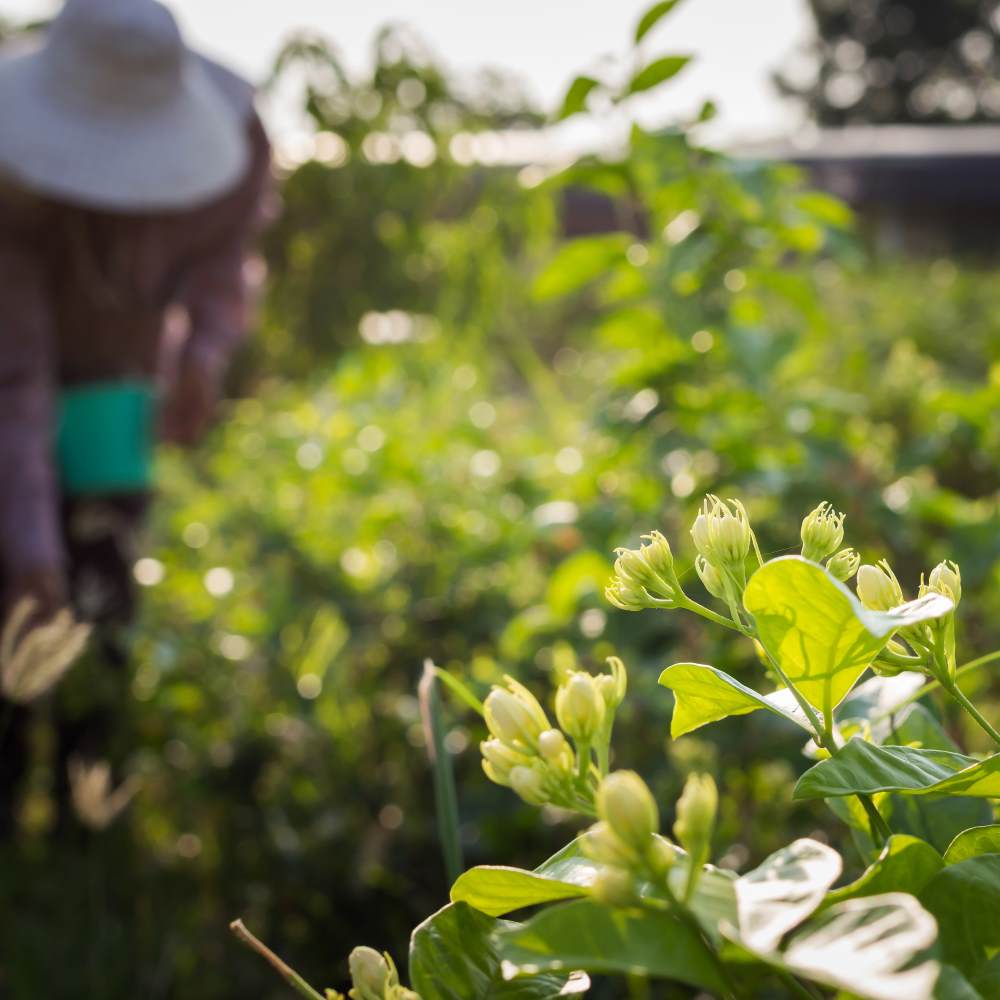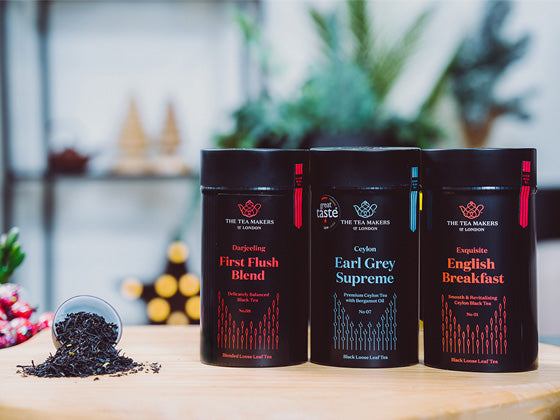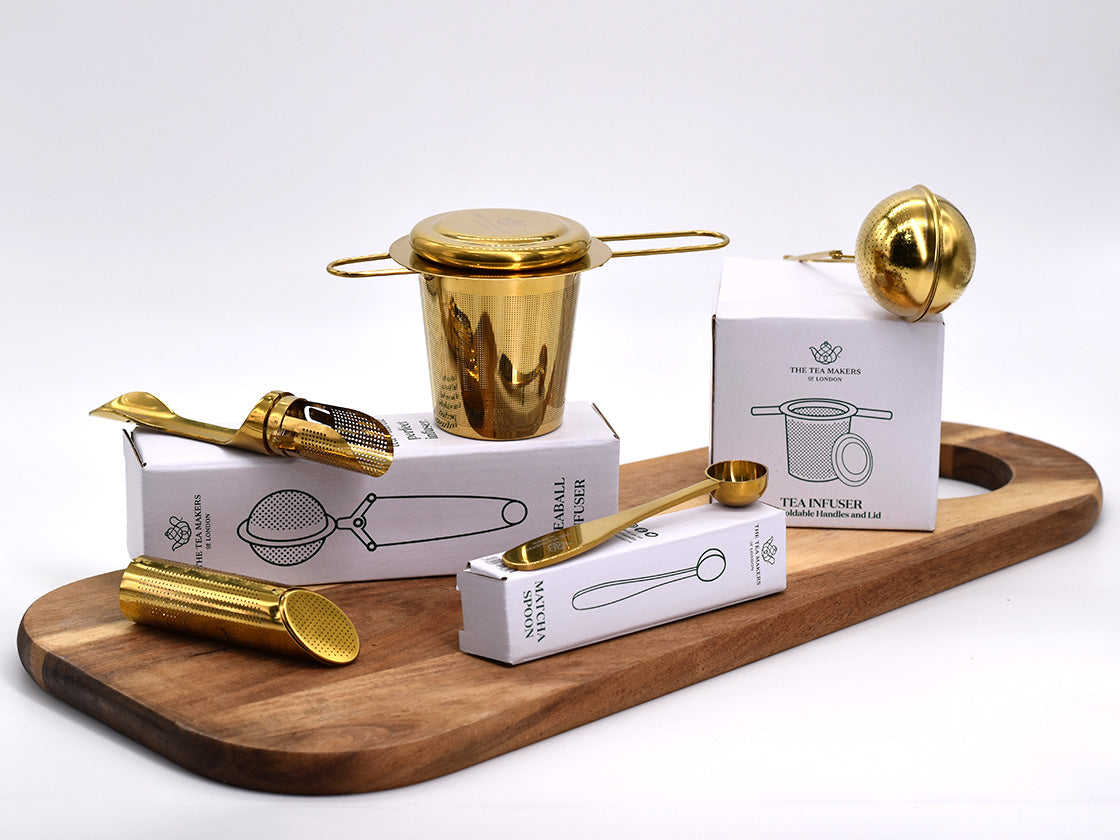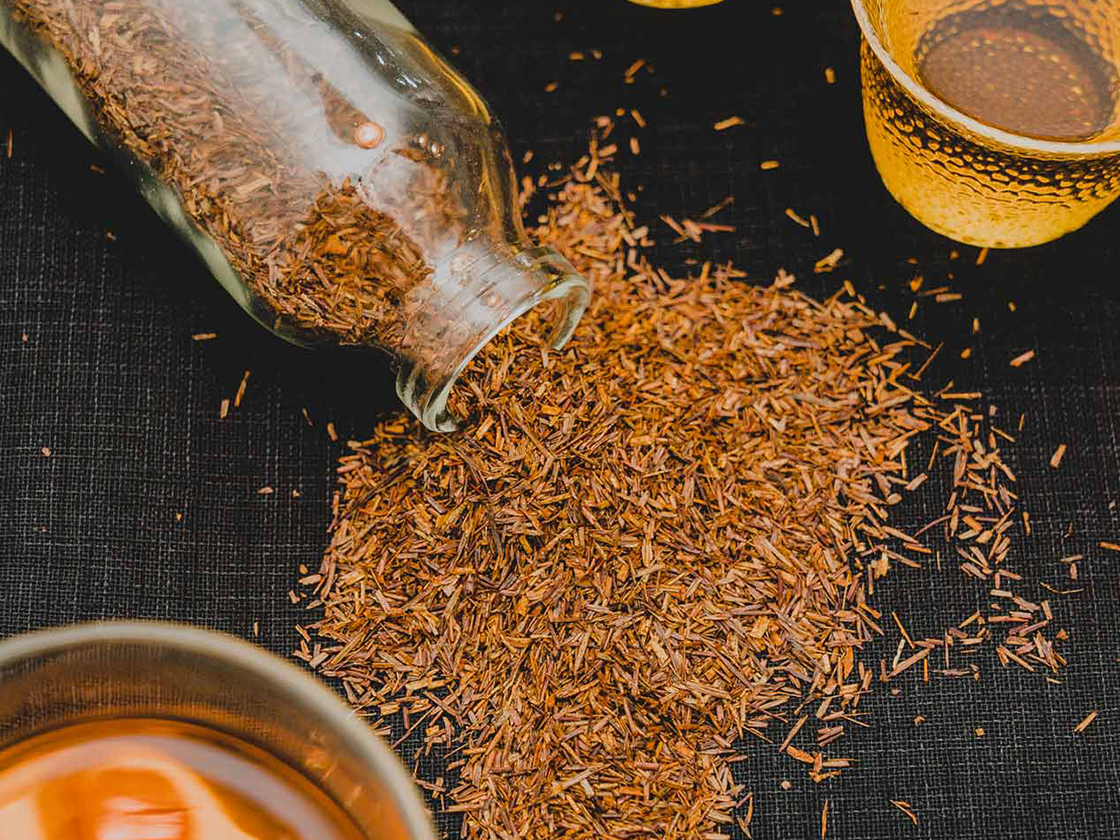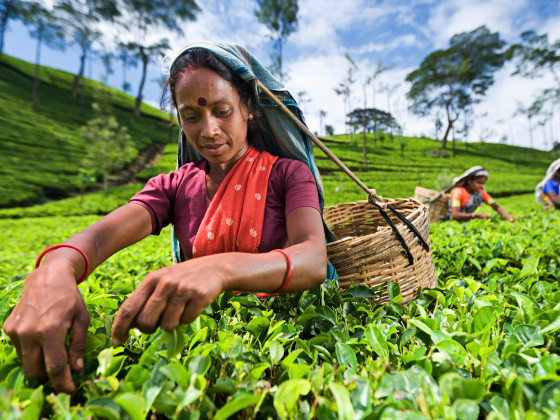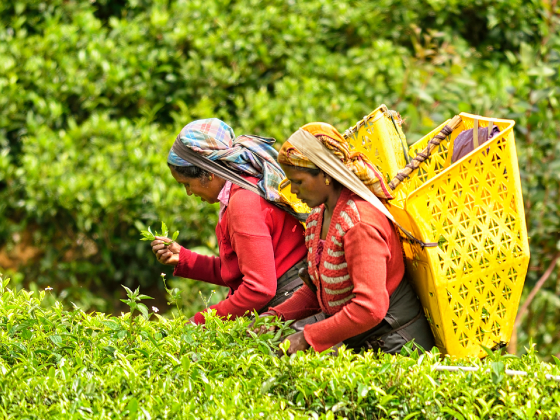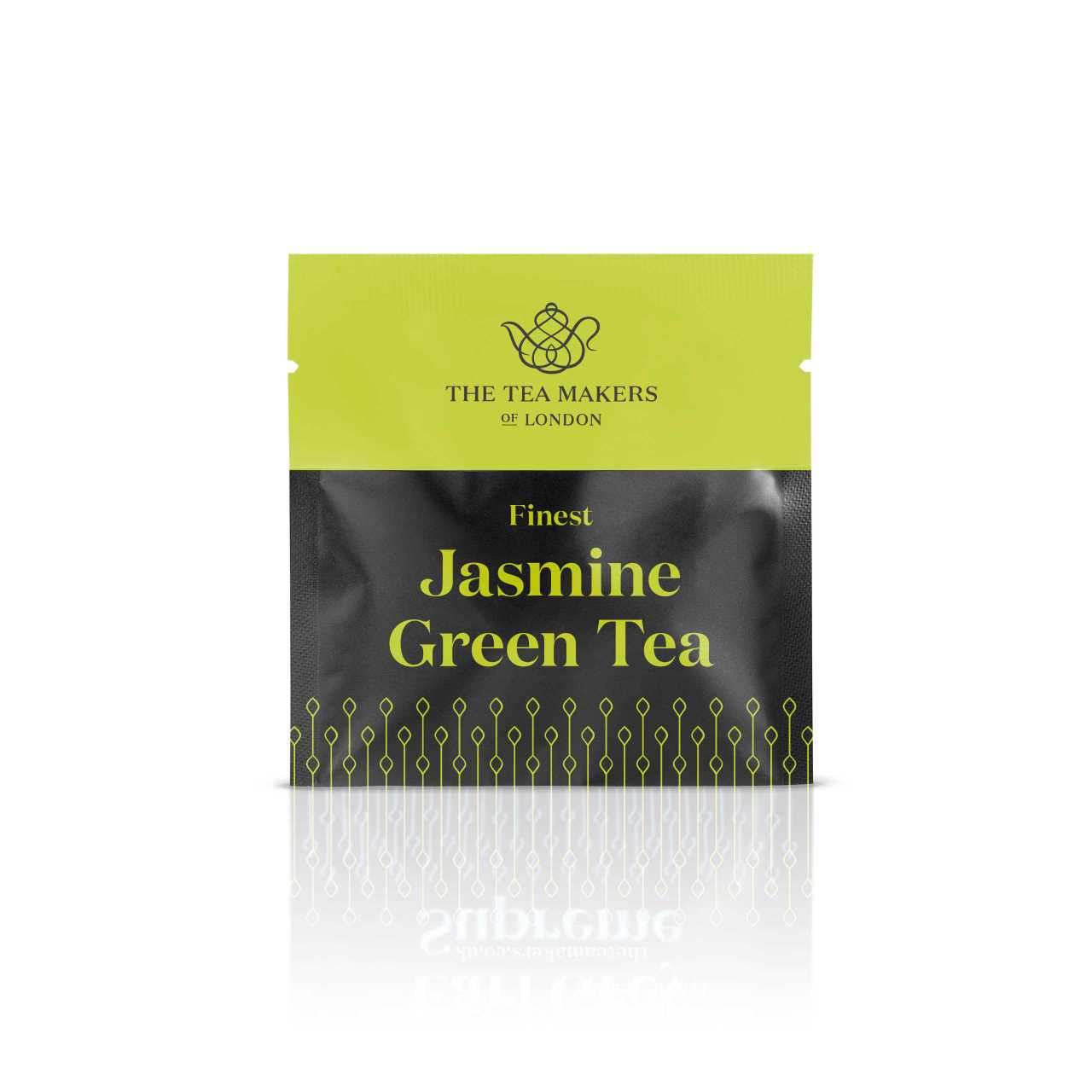

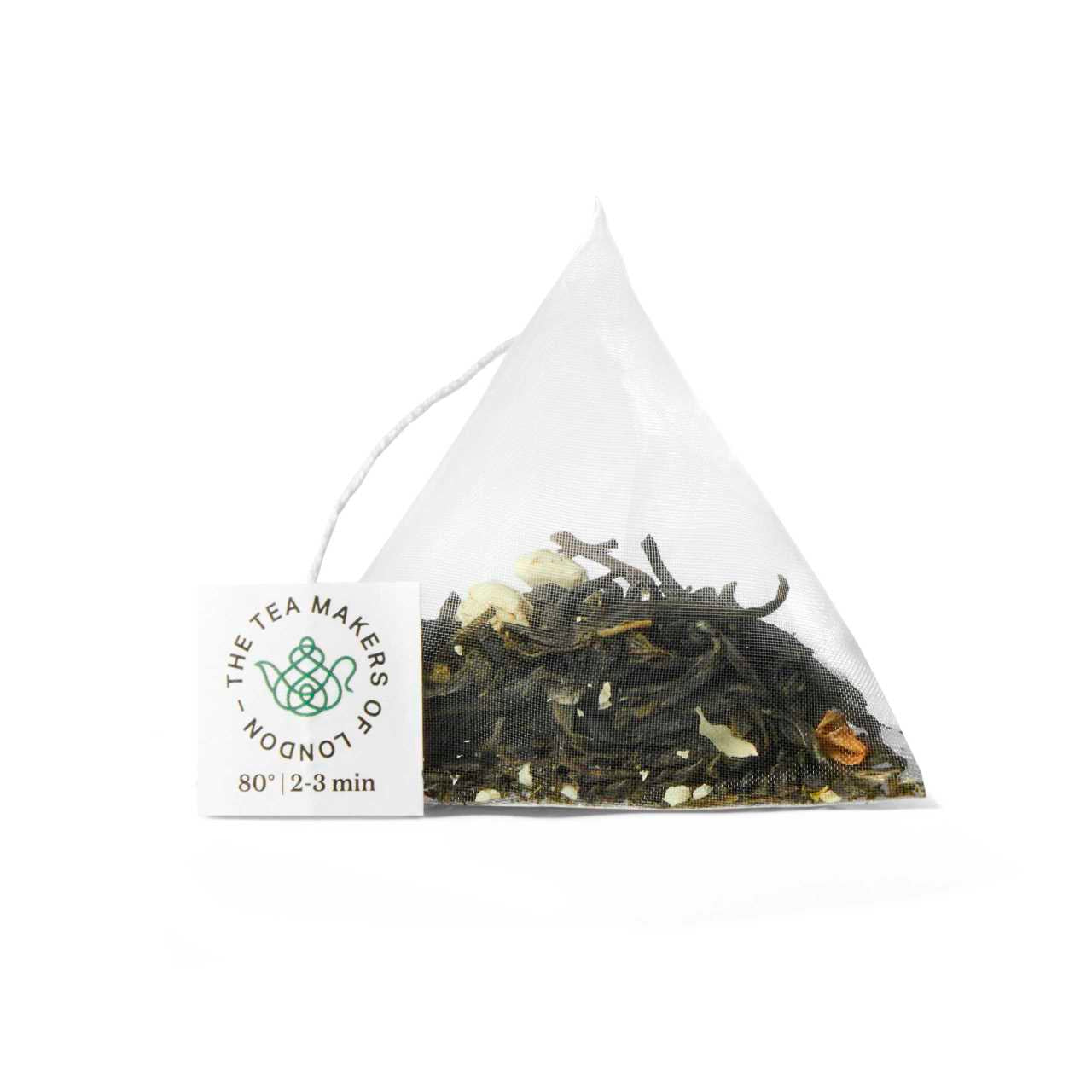

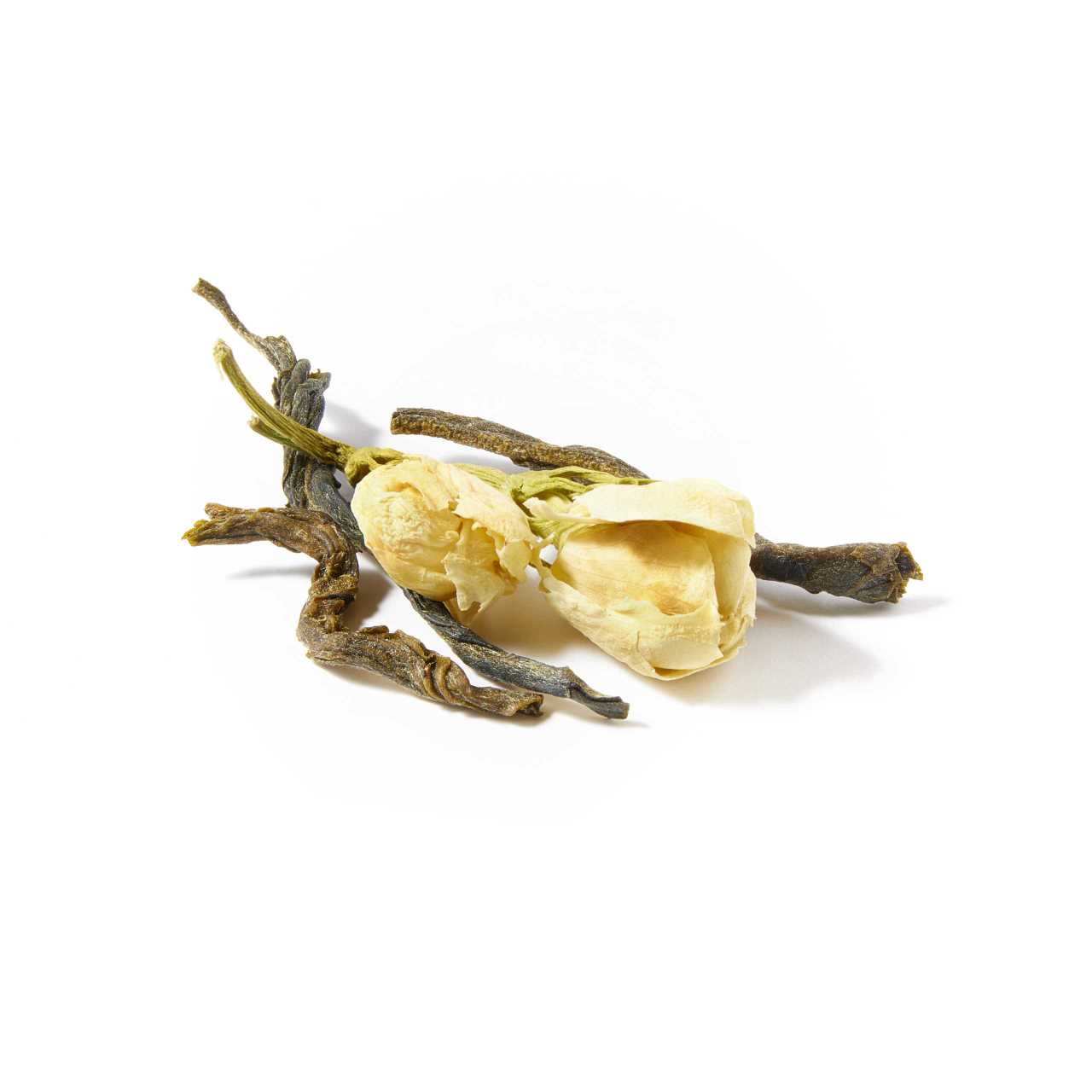

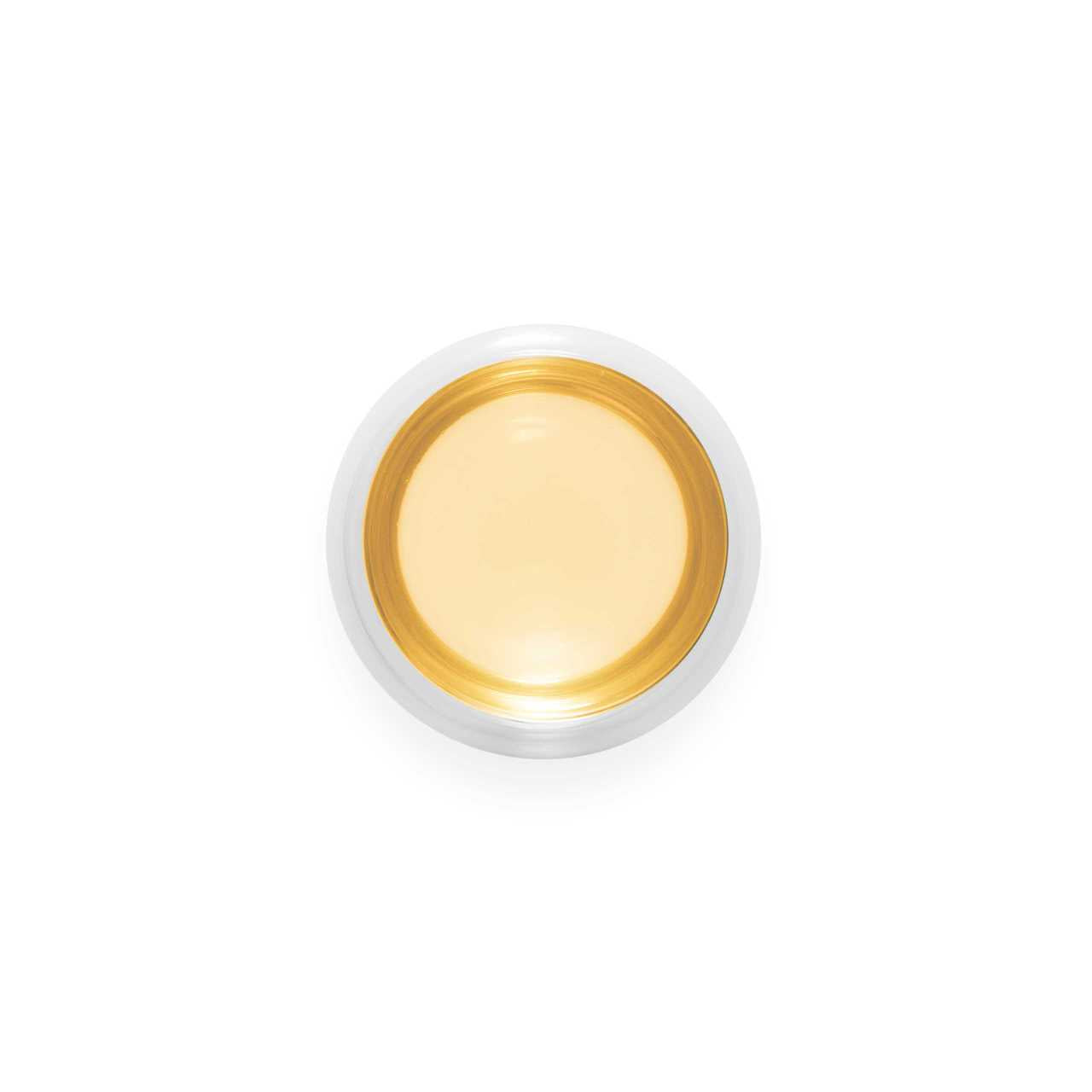

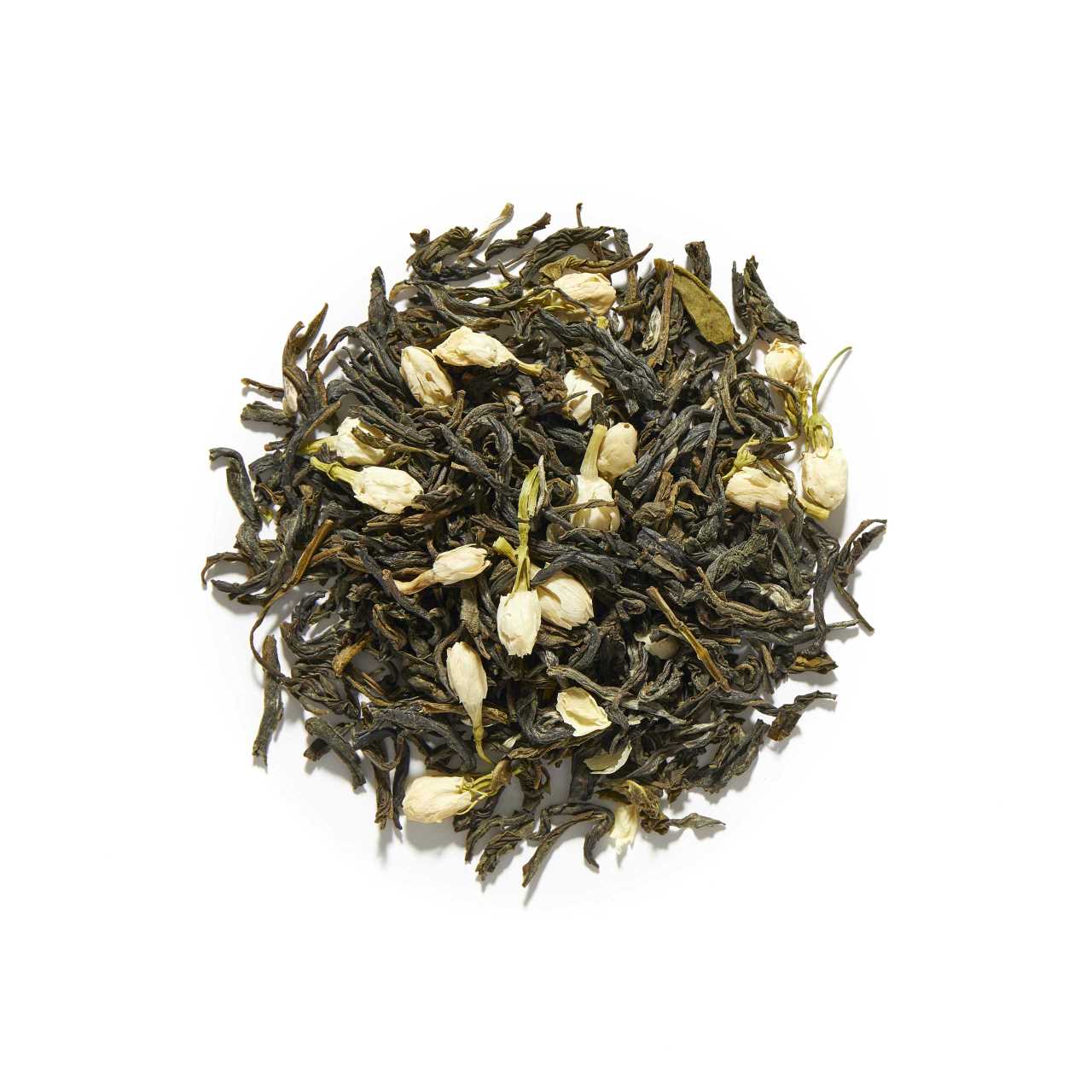

No. 53
Natural Jasmine Green Tea - Teabag Envelopes
Aromatic and refreshing, our two-star Great Taste award-winning Jasmine Green teabags have been infused with the essential oils of Jasmine.
Choose options
Aromatic and refreshing, our two-star Great Taste award-winning Jasmine Green teabags have been infused with the essential oils of Jasmine.
Aromatic and refreshing, our two-star Great Taste award-winning Jasmine Green teabags have been infused with the essential oils of Jasmine.
Fragrant and summery, our fresh two-star Great Taste award-winning Jasmine Green teabags have been individually wrapped for freshness, and are crafted from a naturally infused Chinese loose leaf tea.
Harvested in Fuzhou, south-east China, this high-quality tea combines long curly leaves of Camellia sinensis mixed with heady jasmine blossom for a delightfully floral brew. As well as imparting a typically alluring aroma, the jasmine adds a subtle sweetness that beautifully balances this premium tea's grassy, nutty notes.
You can enjoy this delicate, light golden infusion as it is or with a squeeze of honey if you'd like to add a dash of sweetness. If you're looking to pair it with food, think of cereals and pastries for breakfast or cold roasted meats and sandwiches in the afternoon.
What are the health benefits of jasmine tea?
As well as providing a delicate pick-me-up, jasmine tea has a range of potential health benefits, thanks to its flavonoids called catechins, which studies have shown may be linked to good cardiovascular function, weight management and even cancer prevention. In addition, because of their minimal processing, green teas are also higher in other antioxidants such as carotenoids and ascorbic acid (vitamin C) than other teas.
How is this loose leaf tea made?
Jasmine tea is a Chinese speciality that is enjoyed all over the world. Typically, jasmine tea is green or white tea-based, naturally infused with jasmine buds and jasmine flower petals. At The Tea Makers of London, we work closely with some of the best tea farmers and producers globally, regularly visiting local tea producers, their plantations and production facilities to ensure that the teas we provide are of the utmost quality.
Each premium tea in our Jasmine Tea range is sourced from Fuzhou, the capital of Fujian province in China’s southeast. With its subtropical climate, short dry winters and high rainfall, the area has historically proved ideal for growing jasmine plants and the tea bush, Camellia sinensis. Jasmine was originally planted in the third century and has been blended with green tea leaves since the Song dynasty era (960-1279 AD).
In spring, the finest tea leaves are carefully plucked and dried to prevent oxidation, then stored away until summer’s jasmine flower harvest, when they are carefully layered with the new blooms. Left for several hours, the essential oils of the jasmine slowly seep into the tea leaves, mixing the natural flavours and aromas of both before the tea is gently heated to remove any residual moisture. This process is repeated up to seven times to ensure that the tea leaves take on a strong fragrance. This infusion method – referred to by tea professionals as 'scenting’ – is an intricate process that requires many years of experience to perfect.
Explore similar Chinese or Ceylon green teas
For a more fully floral example of a Chinese jasmine cup of tea, try our intensely fragrant Jasmine Dragon Pearls, which unfurl prettily before your eyes as they brew. If you’re looking for another low-processed tea with the heady aroma of jasmine, try something from our range of specialty white teas: Jasmine Silver Needle from China.
Jasmine tea is as beautiful to look at as it is to drink with its long leaves and delicate blooms. Enjoy watching it brew in a stylish teapot or infuser from our stunning range of Glassware. You can read more about this ancient Chinese style of tea in our Tea Journal
This tea offers an intensely jasmine aroma and clear yellowish infusion. A delicate and soothing cup with clean floral mouthfeel.
Chinese green tea and Jasmine flowers
